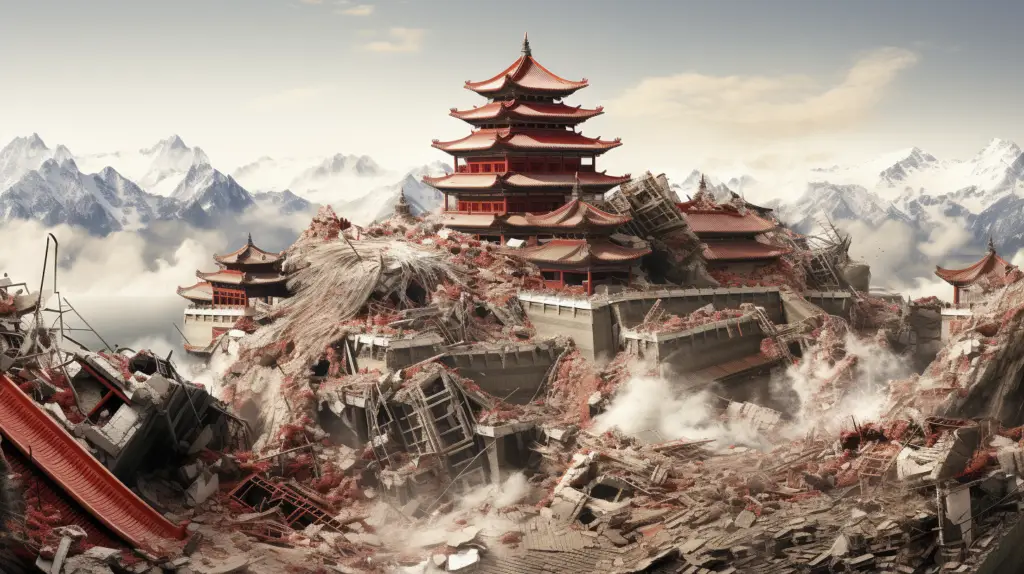The Sichuan earthquake of 2008, also known as the Great Sichuan earthquake or Wenchuan earthquake, stands as one of the most devastating natural disasters in recent memory. It was a cataclysmic event that stirred the global community and brought the catastrophic power of nature into sharp focus. Unraveling its shocking facets, we journey back to a disaster that struck the heart of China and the world, laying bare the complexities of natural forces and human resilience.
Here are 25 astonishing facts about the 2008 Sichuan earthquake.
- The Sichuan earthquake occurred on May 12, 2008, with a magnitude of 7.9 on the Richter scale. It is one of the deadliest earthquakes in the 21st century.
- The epicenter of the earthquake was near the city of Chengdu, the provincial capital of Sichuan province in Southwestern China.
- This disaster caused the deaths of approximately 87,000 people, making it the 19th deadliest earthquake of all time.
- The earthquake affected an estimated 45.5 million people in 10 provinces and regions in China.
- The quake’s seismic waves were so powerful that they were felt as far away as Beijing and Shanghai, over 1,000 miles from the epicenter.
- It was estimated that 5 million buildings were destroyed, and an additional 21 million structures were damaged across Sichuan province.
- The earthquake caused landslides and rock falls, which compounded the destruction, blocked roads, and hampered rescue efforts.
- About 1.5 million people were evacuated from the affected areas due to the high risk of landslides after the initial quake.
- The earthquake struck in the afternoon, at 2:28 pm local time, when many people were at work and children were in school. This timing greatly increased the death toll.
- Tragically, a large number of school buildings collapsed during the earthquake, leading to the deaths of thousands of students. The poor construction quality of these schools was later a subject of controversy and anger among the Chinese public.
READ MORE: 25 Important Facts You Need to Understand About Earthquakes - The earthquake struck at a depth of about 19 kilometers, which is considered shallow in geological terms. Shallow earthquakes often cause more damage on the Earth’s surface.
- The Tangjiashan Lake, a quake lake formed due to landslides blocking a river, posed a significant danger and led to the evacuation of over 200,000 residents due to fears of flooding.
- The tremors were so strong that they changed the course of some rivers and created new ones.
- China mobilized a massive rescue and recovery operation involving over 130,000 troops and medical staff.
- The Wenchuan earthquake is also known as the Great Sichuan earthquake because it was the largest earthquake to hit Sichuan Province in over a century.
- The earthquake caused about $150 billion in direct damage, making it the third costliest earthquake in history, behind only the 2011 Tohoku earthquake in Japan and the 1994 Northridge earthquake in the United States.
- The area affected by the earthquake is home to the giant panda, one of China’s national symbols. Thankfully, most pandas survived the disaster, though their habitats suffered significant damage.
- In response to the disaster, China received international aid from 151 countries and 19 international organizations.
- The Chinese government’s response to the earthquake marked a significant change in its handling of disasters, with a much more open approach to accepting international help than seen in the past.
- Despite the massive scale of destruction, the rebuilding effort was swift. By the end of 2010, more than 90% of the affected areas had been restored or rebuilt.
READ MORE: Earthquakes in California: Everything You Need To Know and be Prepared - The earthquake triggered changes in China’s building codes, with new regulations introduced to ensure structures could withstand similar future quakes.
- Several scientists were jailed for failing to predict the earthquake, sparking a global debate about whether earthquakes can be accurately forecasted and the ethical implications.
- The Sichuan earthquake was also one of the most extensively studied earthquakes in history. Its data contributed significantly to understanding the complex geology of the Longmen Shan Fault, where the Indian-Australian plate collides with the Eurasian plate.
- The earthquake caused significant psychological trauma among survivors, leading to increased investment in mental health support in disaster-struck regions.
- Commemorations are held each year on May 12 to remember the victims of the Sichuan earthquake, marking it as one of China’s most tragic historical events.
READ MORE: 25 Mind-Blowing Facts about China That You Didn’t Know
The 2008 Sichuan earthquake serves as a solemn reminder of the unpredictable power of nature, highlighting the necessity of continued advancements in geological understanding, infrastructure resilience, disaster preparedness, and international cooperation. As we reflect on these shocking facts, let them not only remind us of the immense human tragedy but also the indomitable spirit of resilience that rebuilds and recovers in the aftermath of such disasters.


